Explore & Travel
Beautiful Sapa: mountain trails, Hmong women and marijuana-eating buffalo
This beautiful mountain town in Vietnam offers great trekking and the wonderful hospitality of the nation’s northern hill tribes
Published
4 years agoon
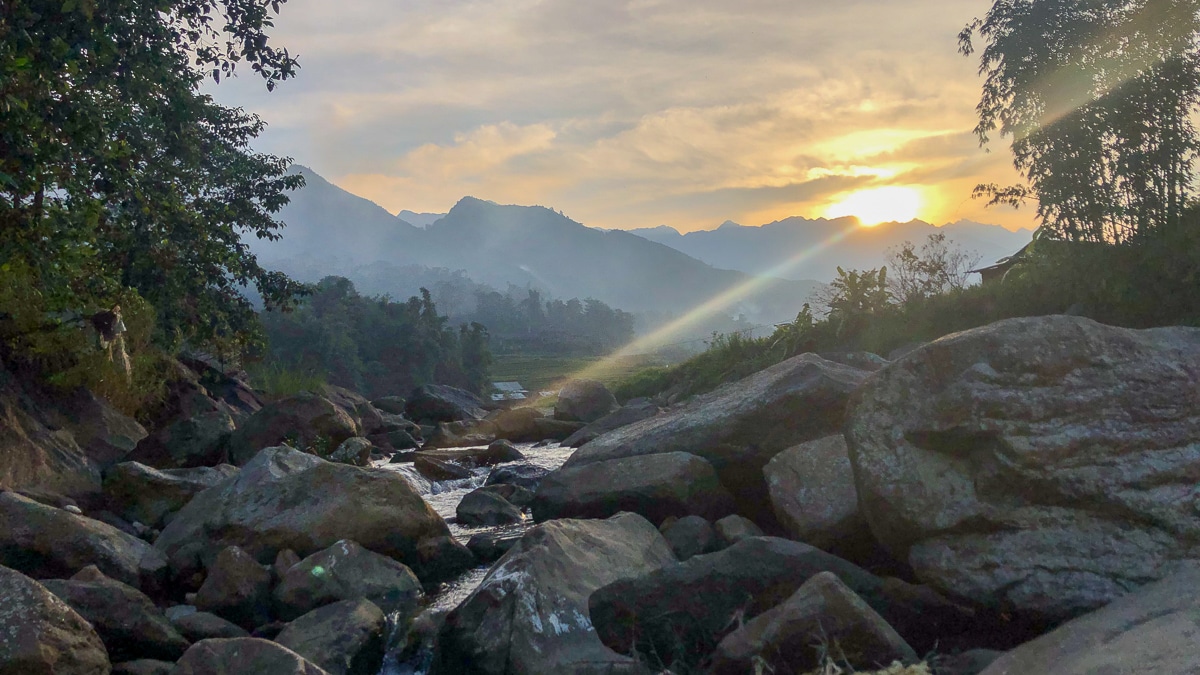
As nearby cafes open their doors the smell of steaming pho and hot coffee waft over the empty streets. Church bells echo from an old gray church, and sleepy mountain town of Sapa awakes. “Hello! Good morning!” yells a cheery Hmong woman, waking the half-sleeping passengers of an overnight bus. “Come out and get warm!” she laughs, as she displays her wares: homemade scarfs, blankets, hats, and toy buffaloes. The first rays of sunlight twinkle through her large silver earrings.

Sapa is easily accessible from Hanoi, only 5 to 6 hours by bus. Hanoi’s Old Quarter offers many direct bus services to the town. Chào recommends Sapa Express for speedy transportation up the rocky, narrow roads. For fans of railroads, there is a train station in the nearby town of Lao Cai. From there, a local bus frequently takes visitors to Sapa, a short distance away.

Known for stunning mountain peaks and sprawling valley patterned by endless rice paddies, Sapa is a popular destination for Hanoians in search of the beautiful, (though it can get chilly in winter). Located in Vietnam’s northwest corner, Sapa enjoys a more temperate climate than compared to the rest of the country. While the summers are just as warm as Hanoi, the winters are reminiscent of the French Alps. Remarkable for Vietnam, light snowfall enchants the town for one or two days during the winter season. Snow in Vietnam is a dazzling sight.
With an average temperature of just 5 degrees Celsius, numerous mountains winds blows through the town, intensifying the frosty air. Scarves, gloves, and hats are useful when things are at their coldest, though snow did not accompany Chào on our getaway during the Tet holiday. For the first couple of days a sunny, blue sky flew above us- perfect weather to explore the town and the surrounding alpine oasis.
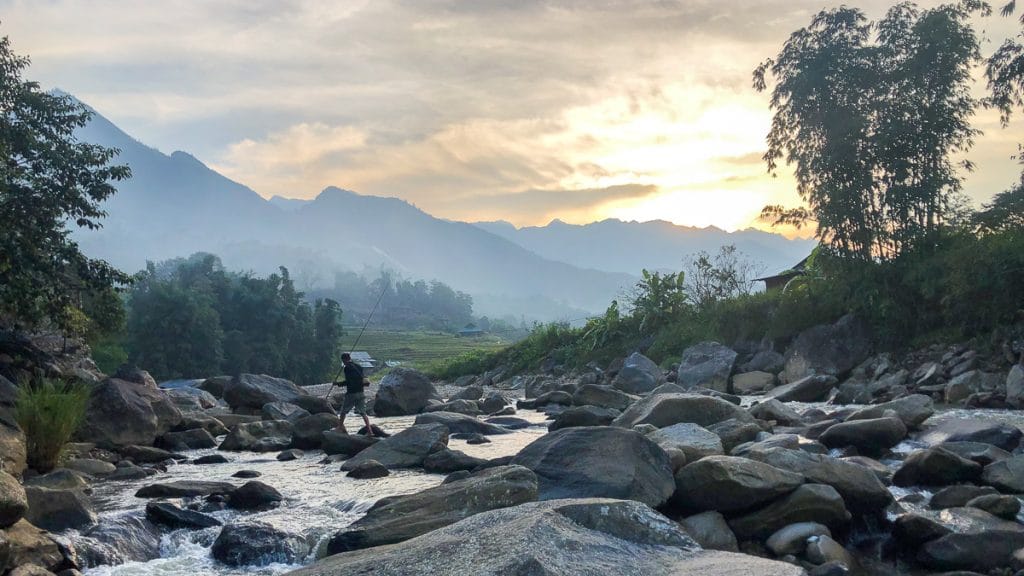
“You don’t smoke marijuana? It’s okay. I feed it to buffalo. Makes ‘em sleepy and happy” she says with a mischievous smile.
The town of Sapa is heavily influenced by the French. Around the turn of the 20th century, French colonists built lavish hotels, restaurants, and a train station. While most original architecture was lost to French bombs during a military campaign in 1952, some sites miraculously still stand.
The Stone Church of Sapa, also known as the Church of Our Lady, is a marble-made wonder located in Sapa’s center. According to local belief, sunlight is a gift from the divine. Therefore, the church faces the east, forever greeting the first light of a new day.
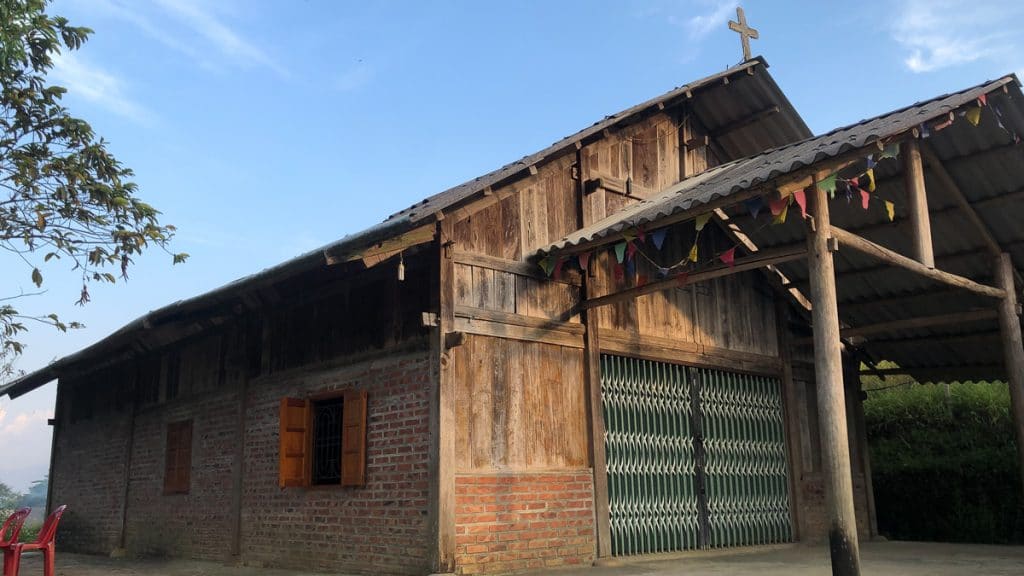
Women and children of the various ethnic hill-tribes gather in front of the church. Dressed in their traditional hemp-strewn clothes, Sapa’s tribeswomen are notorious salespeople, seldom taking no for an answer. They sell a few things you might not expect too.
“Where you from?” a Hmong woman asks as she makes a beeline for us as soon as we get off the night bus. “You buy from me?”
“Maybe another time.”
“Ok, pinkie promise!” she replies, twisting her ancient finger around ours.
The next morning she found us again, this time with a new sales pitch. “Smoke, smoke? Hash? marijuana?”
It was quite the offer, but we politely declined and bought some colorful bracelets instead, and she put her illicit products away and smiled.
“You don’t smoke marijuana? It’s okay. I feed it to buffalo. Makes ‘em sleepy and happy” she says with a mischievous smile.
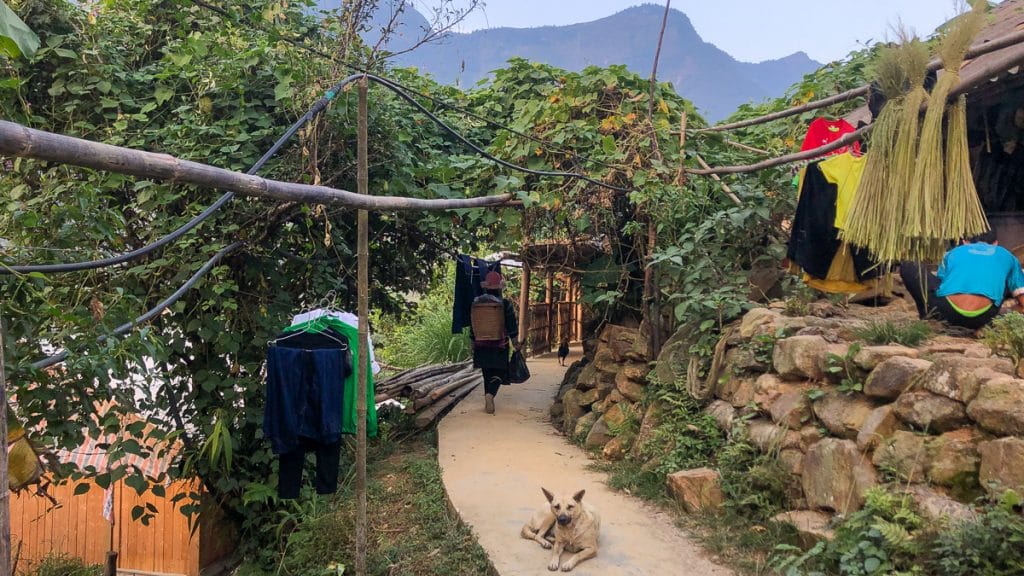
While less-intrepid travelers might find this constant sales pitch of the Hmong women arduous, their presence, knowledge and good humor makes them the ultimate Sapa tour guides. In fact, many offer their services as trekking experts, guiding travelers on expeditions throughout the valley. They laugh and joke, and are wonderful to be around. One local ethnic-minority woman even saw fit to give Chào advice on our website layout.

To get an intimate glimpse of their culture, check out the tribes-people’s weekly “love markets.” Held every Saturday, the events stem from an ancient courting ritual where Hmong men would “steal” Hmong women away from their families to marry them. In want sounds a very non politically-correct tradition, it is thought the more the woman struggle when being captured, the happier and more fortunate they will be later in life. Chào witnessed this practice but was unaware of the tradition at the time, making for a very disturbing and confusing evening amidst the crowds of the town’s center.
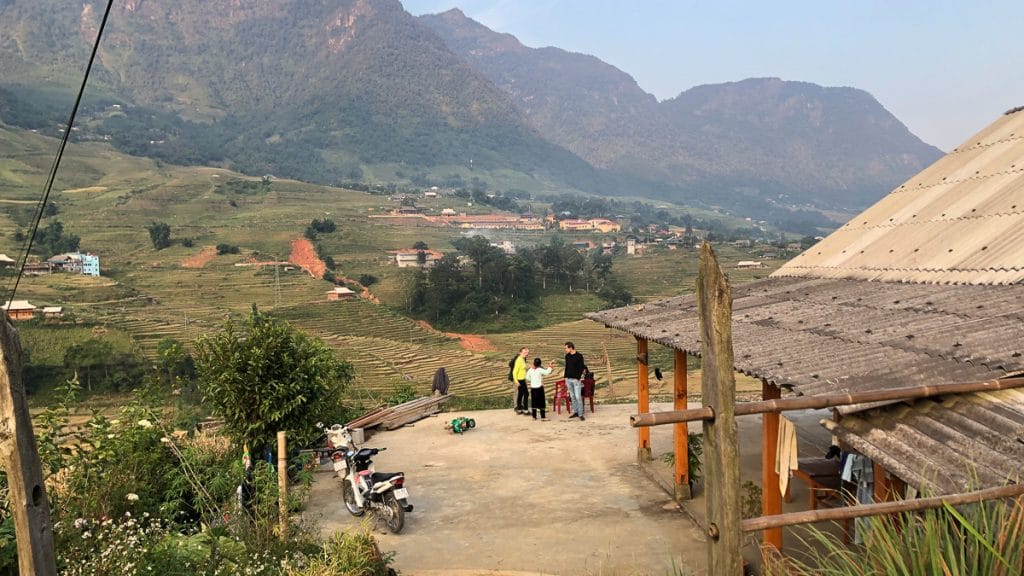
The nearby Sun Plaza, painted with a regal shade of yellow, practically glows on a sunny day. Appearing as the Versailles of Vietnam, the Sun Plaza is actually one of the newer buildings of Sapa. The impressive palace-like site looks almost out of place as it stands beside the modest, narrow Vietnamese buildings. Harboring many expensive stores and cafes, the main reason to visit the Sun Plaza is to check out the swanky Hotel de la Coupole and board the funicular towards Mount Fanispan.
Bright tassels and silver bells jingle as they chase after each other and jump on motorbikes, unbothered by the creeping, evening fog.
Titled as the Roof of Indochina, Mount Fansipan is the largest mountain in Vietnam, standing at over 3,140 meters. There are two options to reach the summit. The first is a steep trek over challenging terrain. While stronger, experienced hikers may be able to conquer Fanispan in a single day, many complete the trek over the course of two or three days. Fortunately, many local guides offer assistance with navigation, camping, and braving the frigid elements and fast running local rivers.
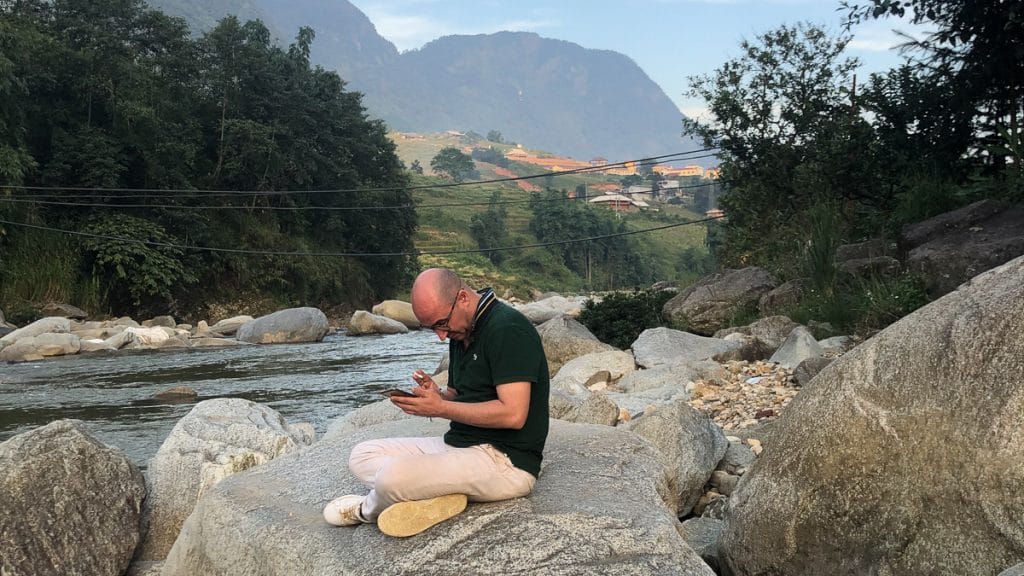
The second option is a pleasant ride up Sun Plaza’s decorative funicular. Costing around 700,000 VND, the speedy transport offers a delightful view of the vast mountain range. Afterwards, a cable car carries visitors to just below the peak of Mount Fansipan. From there a short but brisk walk alongside rocky cliffs and copper Buddhas lead to a fantastic view of Sapa town and the neighboring Hmong Valley. Thick, billowing clouds intertwined with mountain mists periodically obscure the view. For a few minutes, the red-and-yellow Vietnamese flag is the only color in a quiet gray void above the world. (For the hiking-phobic, there is a second funicular to the summit for an extra 200,000 VND).
Another hiking trip near the town is Cat Cat Village located in the Muong Hoa Valley. Cat Cat Village is a very easy trek, taking only 4 or 5 hours to complete. The trail snakes through idyllic flower gardens, farmlands, and crafting shops of the Hmong and Dzao people. The tribes came together in the 19th century, assisting each other through the rougher parts of winter. Remnants of their successful partnership are found throughout the trek. Elaborate bamboo water wheels continue to spin alongside the cool, mountain river. Some of their homes remain open for visitors, displaying their intricate crafts and practical tools.

The trek culminates at the Cat Cat Waterfall via a bamboo bridge crafted to appear as if it is being supporting by giant, wooden hands. A riverside coffee shop offers a peaceful rest point for exhausted hikers and freezing butterflies alike. The fairytale-like atmosphere makes it a perfect location to marvel at both humankind’s ingenuity and Northern Vietnam’s unspoiled perfection.
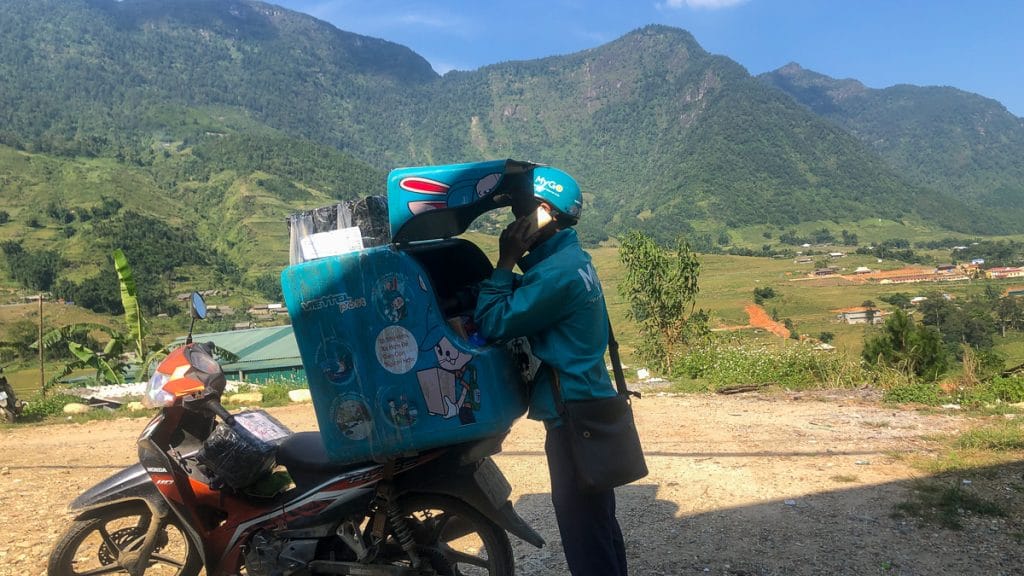
Upon returning from either the peak of Mount Fansipan or the icy spray of the Cat Cat Waterfall, a warm, tasty feast is in order. Fortunately, the town of Sapa is home to many cozy restaurants featuring flavors from Vietnam and France. Chào repeatedly enjoyed dining at Le Gecko Cafe which serves plenty of hearty soups, pastas and other delicious meals. A stand-out is the tartiflette, a divine dish consisting of potatoes, cheese, bacon, and herbs all nestled in a steaming clay pot. Accompanied with a mug of hot chocolate and Bailey’s, the meal ushered in a refreshing night’s sleep after a long day of trekking.

While the town of Sapa has its charms, the beauty extends down the Muong Hoa Valley. The tiny village of Ta Van is surrounded by the towering mountains and checkered fields. Chào has visited Ta Van twice, once in the autumn where we were fortunate enough to see some traditional funeral rites, and once during the first days of the Tet holiday when were greeted by dozens of young mountain children, dressed in their elaborate, traditional wear. Bright tassels and silver bells jingle as they chase after each other and jump on motorbikes, unbothered by the creeping, evening fog.

For the best views of the valley, we highly recommend Hoa’s Homestay. At 135,000 VND per night, the homestay is located within walking distance of several key points of interests. The titular Hoa is a wonderfully hospitable woman with infectious kindness. As the weather began to turn, we felt comforted by Hoa, her heated rooms, her homemade family dinner, and generous helpings of rice wine. The homestay offers many flavored rice wines as an added treat.
If you manage to meet any Hmong women and return home without a bundle of homemade crafts, scarves and colorful bracelets then you are more disciplined than Chào.
While Hoa recommends the summertime for the most agreeable trekking, the beauty of the Sapa countryside lasts year-around. For an amusing jaunt around valley, head toward the Sapa Ancient Stone. Visible from the homestay, the giant stone contains undeciphered pictographs from Sapa’s unknown, first inhabitants.
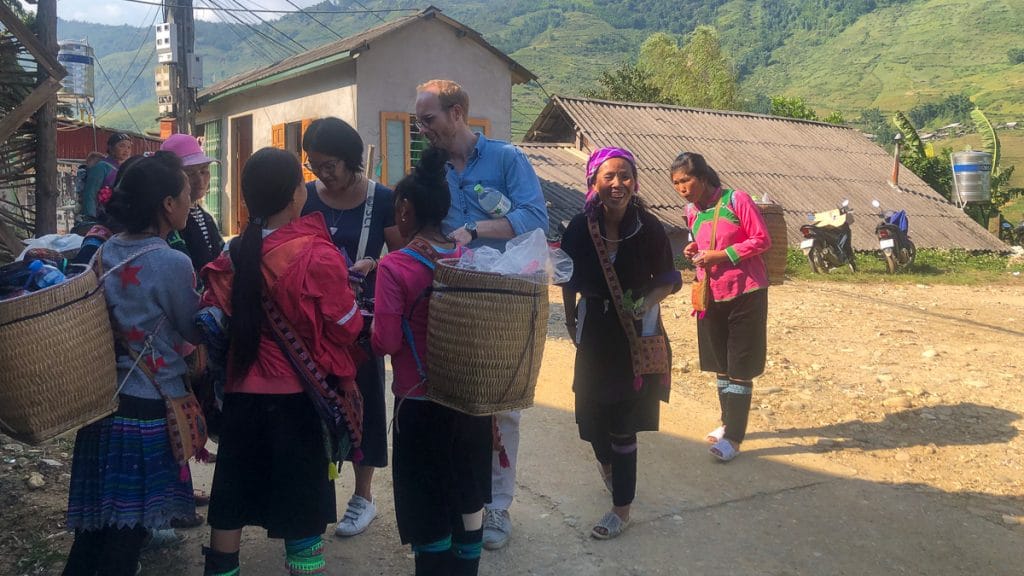
Heading further down the valley, across the river, is the May Waterfall. At this point hikers must scale up a muddy, steep incline alongside a rushing, waterfall. This is easily the most difficult part of this journey. Thankfully, we did not have to complete it alone. La, a 10-year-old Hmong girl, followed us, pointing out the best route. Despite the cooler temperatures, sweat stung the edges of our eyes as we entered the misty Bamboo Forest. La’s feet, adorned with her people’s colorful bracelets, nimbly glided through the darkening forest floor.
“Slowly,” she reminded us, as she herself dashes over mud piles and in between bamboo stalks. She is kind enough not to mention our heavy breathing and several requests for a break. Once clear of the forest, she begins showing her wares of various crafts and toys. There is some light haggling but in the end, La went home 500,000 VND richer and a neon-green and yellow buffalo found itself in a suitcase returning to Hanoi. If you manage to meet any Hmong women and return home without a bundle of homemade crafts, scarves and colorful bracelets then you are more disciplined than Chào.
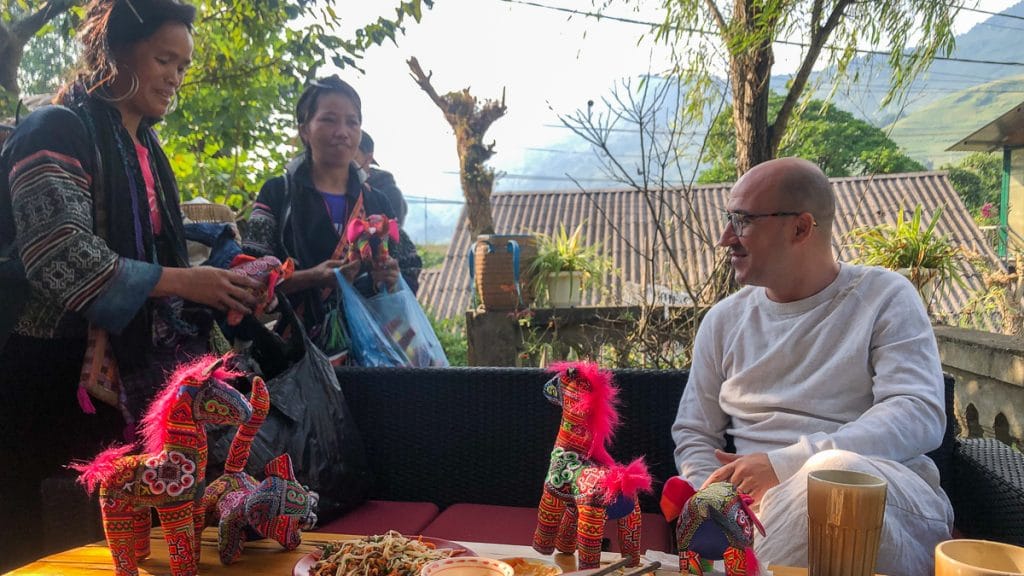
Before returning to home, we suggest dining at the Lucky Daisy Bamboo Bar. Showing the view from the other side of the valley, Lucky Daisy’s rustic atmosphere serves as a great place to plan lengthy treks or simply read next to a crackling fire. For travelers with a sweet tooth, the apple pie and ice cream is a must.
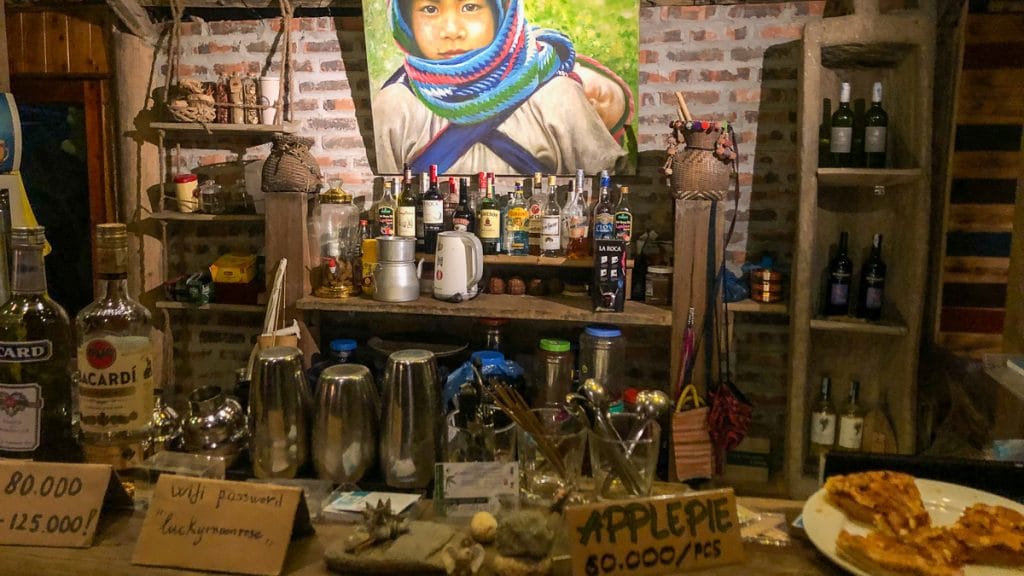
The faint village lights of Ta Van illuminate the path back towards the homestay A sleepy herd of buffalo shuffle before us. We steps lightly, unsure how to proceed. Fortunately, a mindlessly chattering Hmong woman comes to our rescue. Through a fit of giggles and shrieks, she slaps the rumps of the buffalo and hollers at them to jog ahead. With the road cleared, we thank the smiling woman and continue across the valley under the stars, looking forward to a few shots of rice wine and a warm bed.
You may like
-


[Weekend Getaways] The rolling hills of Soc Son
-
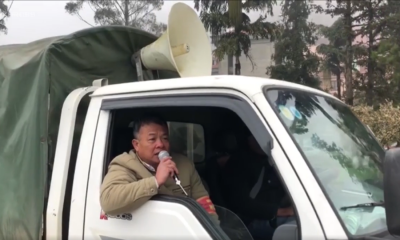

Sapa sets up loudspeakers to warn tourists on dangers of child labor
-
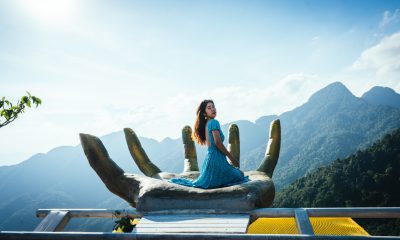

[Weekend Getaways] “We just wanted to get drunk and start a fire”
-
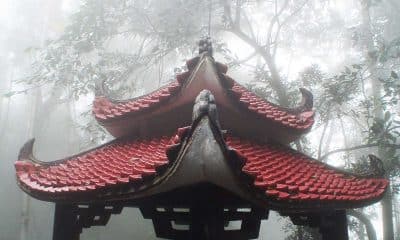

[Hanoi Day Trips] Ba Vi: a ghostly mountain retreat
-
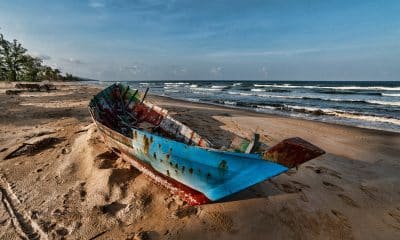

[Weekend getaways] Island paradise: Phu Quoc
-
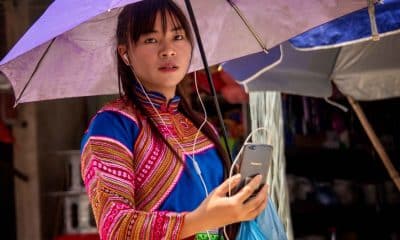

Ethnic groups gather in Hanoi for poverty reduction workshop
-


[Weekend getaways] Chasing waterfalls in Cao Bang Province
1 Comment